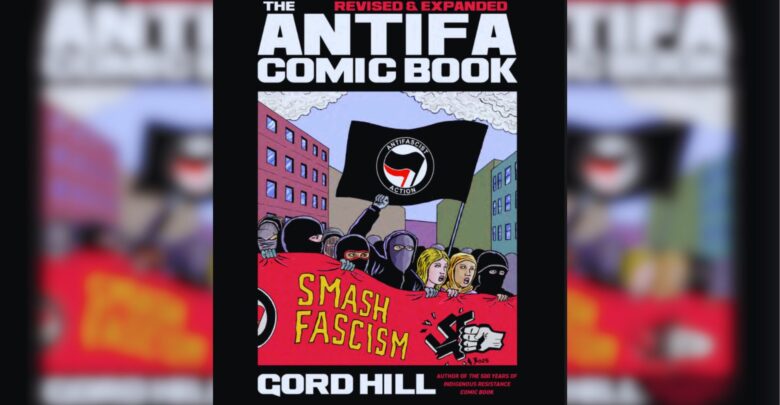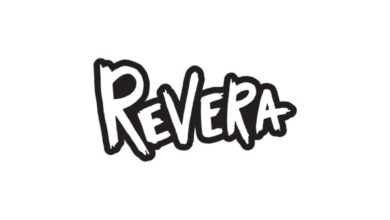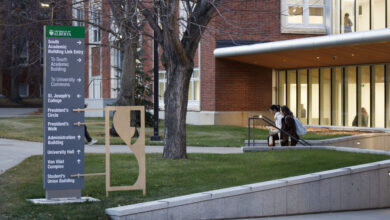Fascism and anti-fascism in Canada: The Antifa Comic Book
Ahead of the release of the revised Antifa Comic Book coming out this upcoming September, Gord Hill and Mark Bray chat about its relevance to Canada, Alberta, and what people can do to combat fascism.
 Supplied
SuppliedOriginally published in 2018, The Antifa Comic Book details the history of fascism, and those who combat it. After Donald Trump’s first presidential campaign in the United States (U.S.), Gord Hill, the comic’s creator, was approached by his publisher to make the antifa comic. Since Trump’s second term as President of the U.S., and an overall rise in right-wing extremism internationally, Hill is releasing a revised version of the comic on August 26, with a foreword from Mark Bray. Hill and Bray chatted with The Gateway about the book, what readers can take from it, and what people can do to combat an increasingly fascistic world.
The comic as a whole, is meant to be a digestible detailing of the history of fascism and its violent combatants. “The main purpose of the book is to be an educational tool. The history of fascism and anti-fascism resistance is presented in a compact and accessible format,” Hill explained.
And while a large portion of the comic is in regards to Europe and the U.S., Canada is not exempt from fascistic ideologies or antifascist resistance. The book extensively details fascist, and anti-fascist, movements across Canada throughout the country’s history. Notably, the Anti-Racist Action (ARA) Toronto and Calgary, neo-Nazi skinheads in Edmonton, and the Aryan Nations in Alberta and British Columbia (B.C.) are all detailed.
In the revised version of The Antifa Comic Book, Hill wanted to highlight far-right extremism leading to islamophobic massacres, two of them being Canadian. With the Quebec City mosque attack and the London, Ontario vehicle attack on a Muslim family in recent history, Hill “thought it was really important to include these in the revised edition. It highlights the role of Islamophobia in mobilizing the far-right over the past decade or so.”
“Militant anti-fascism is one of the main effective tactics against fascist organizing,” Hill says
Bray said that “the far-right has found success turning grievances against transgender people, [the concept of] pronouns, [and] immigrants” as well.
Another main idea Hill wants readers to take away from the revised edition is that the far-right isn’t shrinking. “The far-right is continuing to expand. And now, we have a U.S. president who’s a far-right actor empowering a lot of far-right movements.”
For instances of far-right mobilization in Canada, Hill detailed the Freedom Convoy. “The Freedom Convoy is the most significant mobilization of the far-right in Canada in quite a while. It was unprecedented in the size of it, its scope, and how long it lasted.”
Hill said Canada is often affected by fascistic organizing that happens in the U.S. but that it isn’t as prevalent. “We had some Proud Boys chapters form in Canada, but they weren’t really active. And of course, they were added to the anti-terrorism list and were banned, so they can’t organize.”
In the book, anti-hate groups and hate-groups in Alberta are detailed. Hill said finding out how many hate-groups existed in Alberta wasn’t surprising.
“Alberta has a reputation for being fairly right-wing. With this history, going back to the Ku Klux Klan movement, which was fairly widespread across Canada, I’m not surprised. Especially with the neo-Nazi skinhead groups that were present, and the Aryan Nations present across the prairies.”
With far-right extremism and fascism present throughout history, Hill said a takeaway from the book is that physical pushback is necessary.
Fascism is “the militarization of politics. The fascists don’t want to just politically defeat opponents. They want to destroy them. They have para-military formations and go out into the streets and physically attack their opponents. You have to have some kind of self-defence force. Militant anti-fascism is that self-defence force. If you look at the history of it, militant anti-fascism is one of the main effective tactics against fascist organizing.”
“It either adapts and counters that repression, or it packs up and leaves,” Hill says
Bray said that physical forms of opposition aren’t always the most necessary. And, that antifascists he’s spoken to “argue that if you can avoid physical confrontation and have the same result, that’s better.”
In regards to the People’s University of Palestine YEG encampment at the U of A in 2024, Hill said that “there might be a lack of experience in dealing with repression. It’s a big learning curve when a new movement starts and it experiences police repression. It either adapts and counters that repression, or it packs up and leaves.” The encampment lasted three days before being dismantled, reportedly violently, by Edmonton Police Services (EPS).
He added that, “if police think there’s going to be considerable pushback from protesters, they’re going to be more hesitant to go in and use force.”
Overall, Hill says one of the most important things people can do is “maintaining awareness [and] educating people.” For Albertans, that’s “analyzing Danielle Smith’s politics and the trajectory of it. She’s positioned herself on the far-right, aligning herself with far-right actors including Donald Trump.”
What’s next for Hill is an upcoming comic about residential schools in Canada. It’s based around the Truth and Reconciliation Commission reports. It is expected to be released next year. Bray is working on a book about scams.




